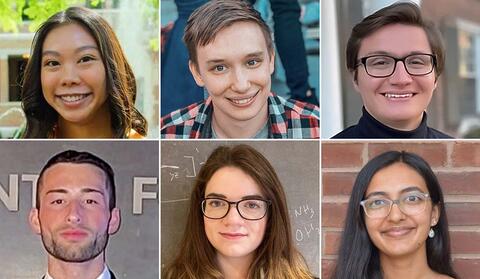
The National Science Foundation (NSF) has once again selected students for their highly sought-after Graduate Research Fellowship Program, and six of them are from Yale Chemistry.
The following NSF Fellows were chosen because they show promise in becoming lifelong leaders that contribute significantly to both science innovation and teaching: Joann Chongsaritsinsuk, a second-year Ph.D. student from the Malaker Lab, Noah Gibson, a second-year Ph.D. student from the Mayer Lab, Sebastian Ibarraran, a fourth-year undergraduate student from the Newhouse Group, Gregory Kyro, a second-year Ph.D. student from the Batista Lab, Katelyn Laughon, a second-year Ph.D. student from the Zhu Lab, and Shivani Patel, a first-year Ph.D. student from the Ellman Lab.
“[The fellowship] gives you the scientific freedom to explore different ideas that you find interesting rather than feeling like you’re tied down to a specific project or a grant,” said Noah.
The fellowship provides three years of financial support with an annual stipend of $37,000, a $12,000 educational allowance, and professional development opportunities. With this support, students are relieved of the pressure to find funding for their research and are free to explore creative ideas.
The purpose of the program is to ensure quality, vitality, and diversity of the scientific and engineering workforce of the U.S. and broaden the participation of underrepresented groups.
Each of the Chemistry students has proven worthy NSF Fellows through their remarkable research, volunteerism, teaching, outreach, and personal accomplishments.
Their research is as far ranging as chemistry’s many fields, spanning disease diagnostics, energy storage and production, drug development, and DNA genetic sequencing.
“The thing about the NSF is they don’t just fund the science. They fund the person,” said Shivani. “They believe in you as a person.”
In their applications, the students included personal statements, which listed teaching and outreach activities, and some told stories of overcoming hardships. Before their careers have started, they are already role models in STEM.
After three years of battling anorexia nervosa, Katelyn “started at the bottom,” taking remedial math and chemistry classes when she entered a community college. “I worked my way up, did a lot of extra projects, and won a few awards from my community college and my undergrad university,” she said. “This motivated me to keep pushing harder and harder to see how far I could get.” She has inspired many young women working to overcome eating disorders. At Yale, she is the president of Yale Chemistry’s Joint Safety Team and co-chaired the 2022 Yale Chemistry Symposium.
“In growing up, I didn’t have any mentors in STEM,” said Shivani. “There was no one that looked like me, no one who was South Asian and a woman.” So, in her undergrad, Shivani helped build a worldwide database of women in STEM and wrote and edited a science magazine for local school kids.
“In undergrad, I was lucky enough to have mentors who encouraged me to apply to these programs for diversity in STEM and social justice,” said Joann. “So, at Yale, I definitely want to continue working towards those goals by mentoring students.” In her undergrad, Joann led culture awareness orientations and organized STEM activities for local elementary school kids, among other projects, and at Yale, she’s mentored a student in her lab through the Science, Technology and Research Scholars Program, which supports women, minority, economically underprivileged, and underrepresented students in STEM.
Noah, who wants to be an academic professor, promotes scientific engagement by teaching topics like electrochemistry and gas chromatography to young scholars through the Pathways to Science summer workshops. He’s often seen leading a group of students, talking passionately about chemistry, whether as a volunteer for Visiting Days or vice president of the Joint Safety Team.
One characteristic that sets these students apart from the many program applicants is their thinking. Gregory shared his “first principles” approach to his research, where he starts “…with things that you are confident are true, and then reason up from there,” instead of a “top-down” approach.
He gives this example: “What are the important needs of humanity? What hypothetical innovations could address these needs at the most fundamental level? Which of these potential solutions is most feasible? And which strategy has the highest probability of success?”
Learn more about the fellows’ research and its influence on society through their research statements below.
Meet the NSF Fellows:
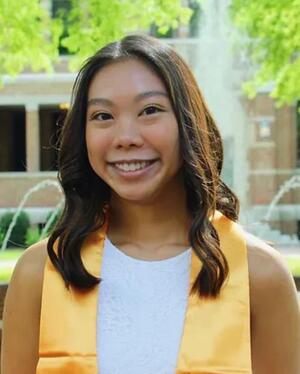
Joann Chongsaritsinsuk Advisor: Stacy Malaker Research: “In the Malaker Lab, I work at the interface of proteomics and glycobiology where I study densely O-glycosylated mucins in disease states. Mucin 16, or CA125, is upregulated in ovarian cancer and is the primary biomarker for the disease, which is plagued by poor survival rates upon delayed diagnosis. I am developing mass spectrometry techniques to characterize the O-glycosylation landscape of CA125, with the ultimate goal of improving its efficacy as a biomarker to enhance early diagnosis of ovarian cancer.” |
|
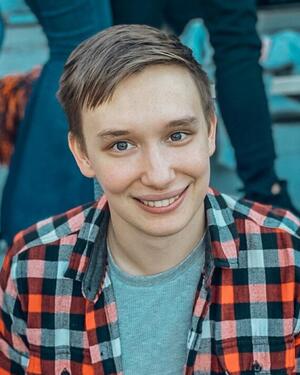
Noah Gibson Advisor: James Mayer Research: “My research focuses on understanding fundamental redox reactions (movement of electrons and atoms) at the solid-solution interface of metal oxides. I explore these reactions using colloidal nanoparticles, which allow for a unique approach that involves a variety of solution-phase and solid-state characterization techniques. Given that this research is fundamental, the lessons learned will have broad impacts on technologies for energy storage or production for a more sustainable future.” |
|

Sebastian Ibarraran Advisor: Timothy Newhouse Research: Sebastian’s research focuses on applications of machine learning to accelerate and enhance our understanding of organic synthesis. Leveraging intentionally small datasets and quantum chemical calculations, he has built neural network models for predicting enantioselectivity in asymmetric catalysis and developing fluorescent probes for biological assays. These approaches have led to meaningful chemical insights and have the potential to make promising therapeutic compounds more accessible through their possible roles in medicinal chemistry. |
|
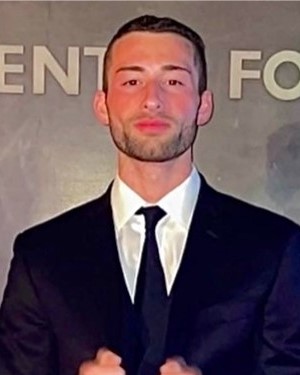
Gregory Kyro Advisor: Victor Batista Research: “The nexus of artificial intelligence and biological engineering will largely shape the future of humanity. Accordingly, I am developing machine learning models and statistical methodologies using cutting-edge concepts from computer science and applied mathematics for studying important biological systems such as the CRISPR-Cas9 protein, as well as for more general applications such as virtual screening. I aim to advance our abilities to engineer proteins to perform specific tasks with high efficiency and to design molecules to selectively alter protein function in a desirable manner, capabilities that will hold unimaginable potential for improving human function.” |
|
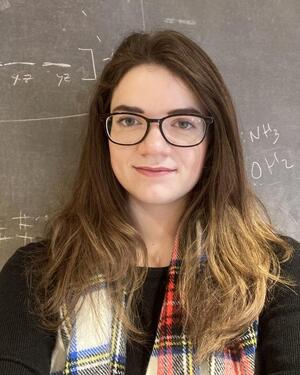
Katelyn Laughon Advisor: Tianyu Zhu Research: “My research is to develop quantum methods to simulate the photoemission spectra of solid-liquid interfaces with quantitative accuracy and reasonable computational cost. To do this, I am developing a Green’s function-based embedding method that addresses the limitations of traditional embedding methods and applying it to systems of increasing complexity to gradually work up to simulating interfaces. This research will assist in materials development with applications ranging from heterogeneous catalysis to energy generation and storage.” |
|
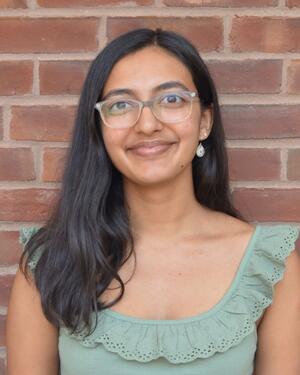
Shivani Patel Advisor: Jon Ellman Research: “In the Ellman Group, we focus on developing enabling organic methods for pharmaceutically relevant drug discovery. My research focus is primarily on the catalytic enantioselective synthesis of sulfoximines via the alkylation of sulfenamides at sulfur. Enabling rapid access to complex and functionally diverse sulfoximines would be invaluable to the medicinal chemist’s toolbox, as these scaffolds are increasingly incorporated into pharmaceutical drug candidates.” |
The following Chemistry graduate students received honorable mentions from the NSF: Abbigayle Cuomo and Kevin Jiang.